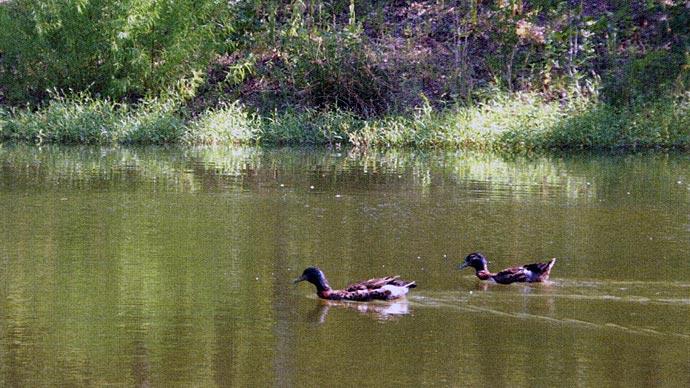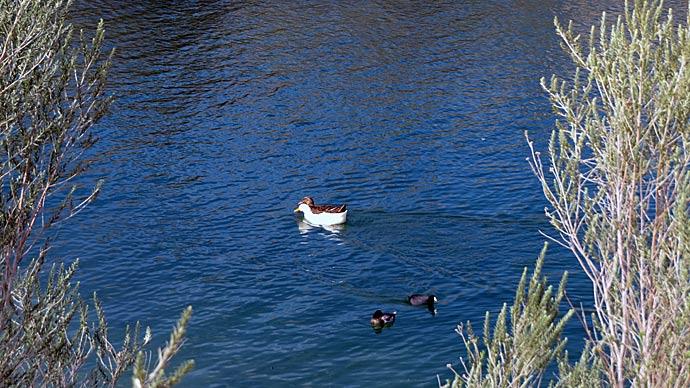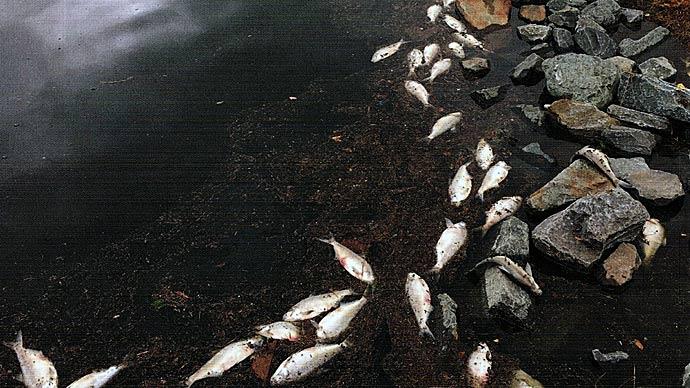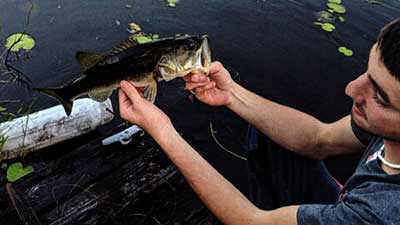
When someone mentions "Florida" in these pages, it's connoted with big bass. In other contexts, "Florida" reminds one of Disneyworld, cruises, hurricanes, and retired people. Heck, even Ripley's Believe it or Not is based in Orlando.
Speaking of "Believe it or Not," here's a pond renovation story for the ages. Actually, there are so many stories inside this story, it was hard to figure out which one to tell.
Meet Tim Stewart. Tim is a commercial bee-keeper raised in New Jersey. He provides bees to almond growers in California to pollinate their trees. Then, some of his bees make their way to New England blueberry and cranberry farmers to help pollinate those crops. Tim transplanted himself to Okeechobee, Florida to be in a better climate to rejuvenate his hives during the fall and winter.
Already see how this story might change directions?
Tim, who is 25—yes, twenty-five—is a dynamic thinker who does his homework. We'll start this story with Tim.
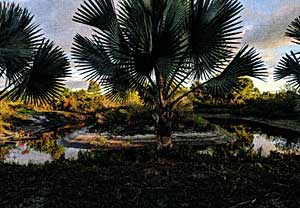
On his recently purchased Florida property resides two small ponds. Heavy on the word, small. One is twice as big as a pickup truck and the other covers a half-acre, with an island in the middle, a proverbial donut-shaped pond.
Tim found Pond Boss online and zeroed-in on some of the archived Wednesday night live Facebook videos that we save to YouTube and link from the website. He contacted us with some questions.
Our communication started innocently enough. "I'd like to fix my ponds for good bass fishing, especially since I'm here in Florida." After messaging one another, it became clear a spoken conversation would allow us to cut to the chase much faster than working through a keyboard. I rang him up and learned he'd been catching a few stunted bass and a handful of endemic coppernose bluegills. The main pond had never been managed and looked as though sandy soils had been excavated to raise a house pad. Each pond was tannic, that tea-stained look where soils are low or void of minerals. Being in Florida, he also had lots of aquatic plants and a small alligator. Of course, he had an alligator. It's Florida.
As we talked, I sensed his thirst for knowledge. He's so thirsty, he decided at the last minute to come to the first Bob Lusk Institute of Higher Pondology.
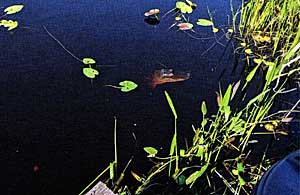
Good thing he did. That guy will end up with more water over the next few decades. It's in his blood.
As his steep learning curve kept twisting around, he went from catching a few fish on rod and reel to using a cast net. That's when the story started twisting, too.
Like many pondmeisters, he figured he had a pond full of stunted bass and not enough food— until he caught a lone walking catfish in his cast net. A quick bit of research and a phone call with yours truly, and that was literally a dead fish walking. Walking catfish are despised in Florida. He dispatched it. He sent a photo of the rest of his bounty from the cast net. He had a few bluegills, three different sizes of tilapia, some warmouth, and a sunfish I didn't recognize.
After attending the pondology event, he made a wise decision. He decided to pump the small pond down and remove all the fish. Since both ponds fill from the water table, he figured out he could pump the small one down in a day, get all the fish out, let it refill over a week or so and restock with desirable fish, preferably bluegill he could grow out and use in the bigger pond.

He fired up a trash pump, and before long he was tromping around in the sandy bottom of the small pond, capturing and getting rid of a bunch of small, two to four-inch warmouth sunfish. That's all that was in that pond other than apple snails; the snails were huge, golfball sized apple snails, which is another invasive species. Native, but invasive nonetheless.
As that part of the project progressed, he kept sampling the bigger pond. He caught a few more fish and it registered with him that this pond had a bigger story to tell.
He decided to pump it down as well. With two invasive species, good stewardship dictates the need to get rid of those things and get back to something healthy, like a bass fishing pond.
While the bigger pond was dropping lower via a pump, he built bluegill spawning beds in the small pond and added some cover where baby bluegills could hide. Since he found those apple snails, we had a conversation about redear sunfish. Redear sunfish make a living on snails—as long as those snails are small enough to fit in their mouths. Gotta get those gastropods when they are babies. As Tim studied his fascinating aquatic environments, he found several nests of pink, pinhead sized eggs stuck to so a shoreline plant. Apple snail eggs. By the way, think about the complexity of apple snails. They have both a gill and a lung. If the redear doesn't get the chance, maybe Tim can hit them with a lawnmower. Or, one of the local birds he sees, a limpkin, can make a better living eating the succulent little escargot.
See all the tangents this story offers?
This isn't your normal pond renovation.
As the water level dropped, Tim found all kinds of weird stuff. Three-pound tilapia, rerouted to the dinner table, a few Largemouth bass, and a huge waterdog that looked like an eel. That was actually a juvenile Florida salamander that was attacked by a shorebird as it tried to escape the pond, but that's not what killed it. The slippery, 10-inch waterdog strangled on a two-inch bluegill locked sideways in its maw.
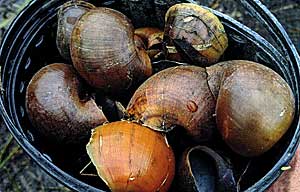
After seining the last foot of pond as the pump regurgitated water into a nearby ditch, Tim found some lanky carp, a few stocky, bronze-colored carp-looking fish that are probably goldfish that stayed their juvenile bronze color, and several more walking catfish that were quickly eradicated.
There was one more fish—some kind of armored catfish. It was a plain looking creature compared to abundant Plecostomus fish found in nearby canals and ponds. I still have no idea what name that fish carries.
After it's all said and done, draining both ponds was the smartest thing to do. There's no way to try to rehab those fish populations into a bass fishery, even considering the small size of the biggest pond. Now that all those competitors have been removed, and after he establishes a healthy food chain, he stands a chance at growing a few nice bass.
He harvested several hundred bluegills that he's storing in a biofilter connected to the small pond, until the big pond fills back up. At that point, he'll decide whether to stock with hatchery fish, use the good fish he's harvested, or a combination of both.
While the bigger pond is down, Tim plans to build four or five bluegill spawning beds and add some fish attractors.
He's also made up his mind to add a couple of water circulators to push water horizontally around the island and turn his pond into a passive, part-time lazy river. His thought process with the addition of a gentle current is to take advantage of his fish's natural ability to adjust. Some fish prefer a gentle current while others prefer a static pond.
Since he depends on the ground water table, he thinks that trick will move water just enough to assist with cleansing and aeration, as well as create a niche environment.
But, that's another story.
Reprinted with permission from Pond Boss Magazine

